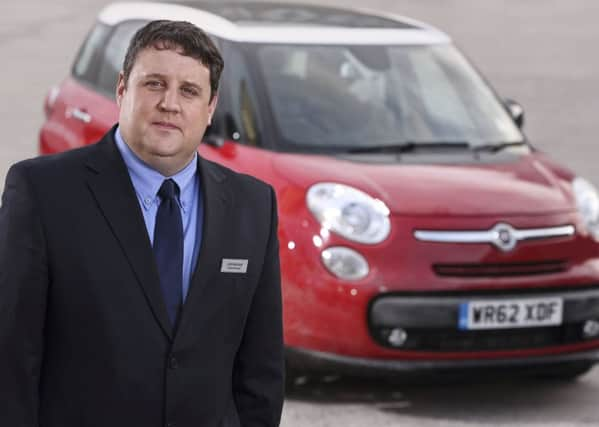Alastair Dalton: Let car sharers get ahead to beat the queues


Instead, most commuters sit alone in a metal box as large as their bathroom to drive themselves to the office, factory or college.
Compared to passengers on a bus, cyclists and walkers, that’s a huge amount of space.
Advertisement
Hide AdAdvertisement
Hide AdWhere else do we allocate ourselves so much room and in such an in-demand location - the road network?
It’s a topical question to pose in the week the M8 was finally completed between Edinburgh and Glasgow, since a third lane has been added over part of the missing stretch.
Adding such extra road space - the old A8 that the new M8 replaces also remains - often just generates extra traffic.
The jury is still out as to whether that has happened with the M74 extension into Glasgow, with delays on the M8 now at times as bad as before it was opened six years ago.
That all points to the need to encourage better use of our limited road space by prioritising certain types of users - such as people sharing cars.
Transport Scotland could have been bold and reserved those third lanes on the M8 for drivers carrying passengers - so called high-occupancy vehicle or 2+ lanes.
They are well established south of the Border, such as in Yorkshire, where the M606 motorway from Bradford joins the M62 between Manchester and Leeds.
The lane bypasses a roundabout and traffic lights at the junction, enabling those in eligible vehicles to sail through rush-hour congestion.
Advertisement
Hide AdAdvertisement
Hide AdBut it has proved too radical a notion for the M8, as I’m told consultants concluded that such lanes would cause “significant operational disbenefits” on what is already one of Scotland’s busiest road corridor. In other words, it would just make things worse because not enough vehicles would use it.
Motoring groups tell me the problem on such inter-city routes is that people are heading to and from too many different places for car-sharing to work.
What would be more promising, I’m told, are roads connecting densely-populated residential areas with city centres, where more commuters are heading for similar destinations.
However, technology could be brought to bear here, matching potential car-sharers to create a critical mass to make giving them separate lanes feasible.
Several schemes already operate, such as TripShare by the South East of Scotland Transport Partnership, a public-private co-ordinating body, and it’s a developing market.
At the very least, multi-occupancy lanes could give coaches the same advantage as afforded by bus lanes in urban areas.
Scottish ministers have been talking about such lanes for more than a decade. Their current National Transport Strategy - launched in 2006 - suggested that road improvements could be prioritised for multi-occupancy vehicles “to reduce their optimum journey time as well as improve reliability”.
There were early plans for lanes for high-occupancy vehicles as part of the Queensferry Crossing project, and certainly, if ever the Forth Road Bridge is opened to cars again once the new link opens, it should be with such a restriction.
There are now record numbers of vehicles on the roads. At some stage, there may need to be some such radical re-ordering of how such space is allocated.